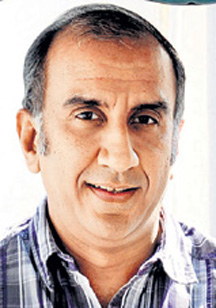NEW DELHI, (Reuters) – Several years after soft porn films nearly died out in India, mainstream Bollywood has now shed its inhibitions to make a movie about a former sex symbol.
“The Dirty Picture” is said to be based on the life of Silk Smitha, a south Indian actress who became a household name in the 1980s and 90s with her semi-nude scenes and brazen on-screen persona.
The film opens in Indian cinemas on December 2.
Director Milan Luthria spoke to Reuters about The Dirty Picture and why mainstream Bollywood actress Vidya Balan was his first choice for the lead role.
Q: Why did you decide to make a film on Silk Smitha?
A: “There were a lot of women like her, this movie is not just about her. Like Nylon Nalini or Polyester Padmini. So we found a slice of life which was unique. There were ingredients which excited me. Yes, it is a very brazen, bold life — an extra who carved a niche for herself in a male-dominated industry. I like the fact that there were men who were superstars at that time, they would wait for months so that they could put a song by her in the movie. There were a lot of beautiful women around at that time, so why her. What was it about her that set people’s imagination on fire.”
Q: And what do you think it was?
A: “I think it was the fact that she chose to walk where nobody had walked before. She decided to make a career out of selling sex. And yet there was an emotional quality to her, which the film explores in the second half. I did not look at her as a B-grade actress; I looked at her as a survivor.”
Q: The risqué rushes have created a buzz…
A: “See, we are selling sex and we are not ashamed of it. I think it is time we all came of age and accepted it in our movies. I think when you are making a movie of a woman and her sexuality; it has to be out there on display. This was a risky proposition, to make a movie without a conventional story or conventional casting. So we will use every device to stand out and catch viewers’ eyeballs.”
Q: How did you try to capture the nuances of the 1980s?
A: “The 80s was a very flamboyant era. So we had a good time, we saw a lot of films and we had to work extremely hard. This is by far the toughest film I have done, in terms of research, in terms of getting Vidya (Balan) to put on weight, in terms of convincing her to do the scenes that she has done. It is a difficult film to do. What I am happy about is that everyone is appreciating it looks authentic.”
Q: How different is it from any other film you have done?
A: “Working around a woman’s body, and a woman’s emotion, sets this film apart from anything I have done. And Vidya is extremely sexy in the film, we have to get the viewers to go past that at some point and connect with her emotions.

“Also, there is an element of the South (of India). We did not want to make a spoof. We did not want to make our characters look like baboons. We want it to look real.”
Q: Why Vidya Balan?
A: “She was my first choice. She is a quintessential, voluptuous Indian beauty — the kind of face and figure that is disappearing from Indian cinema. She has it all. She is reminiscent of the Hema Malinis and Vyjayantimalas (yesteryear Bollywood actresses). Also, it is unexpected of her to do something like this — and we are counting on that impact. Seeing her do it is a lot more newsworthy than anybody else. Also, she is one of our most talented actresses and lastly, she is a south Indian.”
Q: What was your favourite bit about making the film

A: “The favourite part was gaining Vidya’s confidence. It was not easy, but it was very heartening to see a woman who was hesitant at the beginning, learn to trust her director — and give completely to it, and not hold back. I could see her slowly dropping her reservations, week by week she began to trust more and enjoy herself more. It went from her not happy at all to her coming in with a hundred ideas every day, which eventually were shocking to us. So it was a complete turnaround and that is where as a director I found a lot of success.”





